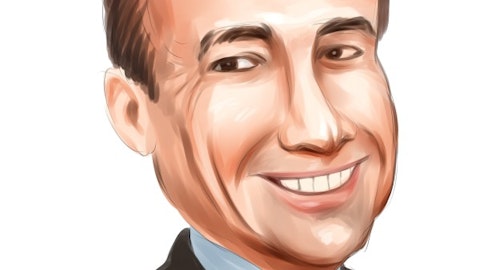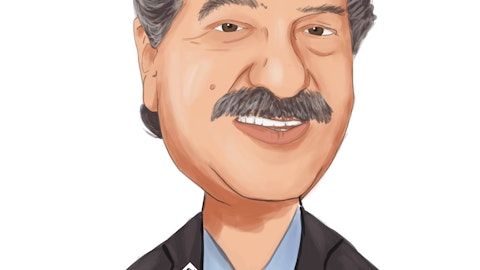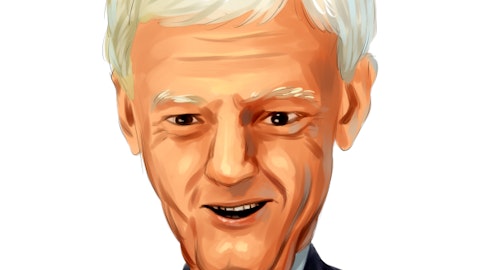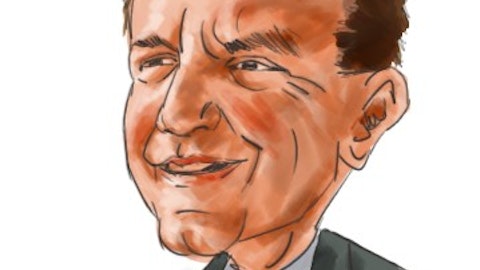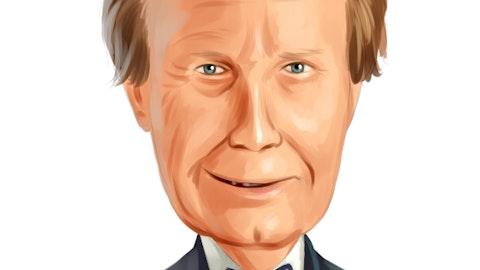Franklin Electric Co., Inc. (NASDAQ:FELE) Q4 2022 Earnings Call Transcript February 14, 2023
Operator: Good day. And welcome to the Franklin Electric Reports Fourth Quarter 2022 Sales and Earnings Conference Call. At this time, all participants are in a listen only mode. Please be advised that today’s conference is being recorded. It is now my pleasure to introduce Chief Financial Officer, Jeff Taylor.
Jeff Taylor: Thank you, Andrew. And welcome, everyone, to Franklin Electric’s fourth quarter and full year 2022 earnings conference call. On the call with me today is Gregg Sengstack, our Chairperson and Chief Executive Officer. On today’s call, Gregg will review our fourth quarter and full year business highlights, fiscal 2023 guidance, progress to date on our long term strategy and our latest global secular trends. I will provide some additional detail on our financial performance. We will then take questions. Before we begin, let me remind you that as we conduct this call, we will be making forward-looking statements within the meaning of the Private Securities Litigation Reform Act of 1995. These statements are subject to various risks and uncertainties, many of which could cause actual results to differ materially from such forward-looking statements.
A discussion of these factors may be found in the company’s annual report on Form 10-K and today’s earnings release. All forward-looking statements made during the call are based on information currently available and except as required by law, the company assumes no obligation to update any forward-looking statements. With that, I will now turn the call over to Gregg Sengstack.
Gregg Sengstack: Thank you, Jeff. We delivered a strong finish to 2022. All three reporting segments set fourth quarter sales records and both Water and Fueling systems set records for operating income over the same period. During the quarter, we delivered operating margin expansion in our Water and Fueling businesses, driven by customer demand, pricing sufficient to offset inflation and FX headwinds and a steady operational execution. We experienced solid end market demand throughout 2022, which continued through the fourth quarter, driving top line growth across each business. Our supply chain continued to recover with past due shipments down 50% from last summer’s peak. At the same time, due to continued strong order flow, backlog increased to $260 million or up $10 million sequentially.
Turning to our segments. Water Systems sales were robust across all end markets with overall revenue growth 9% and operating income growth of 23%. Pricing actions and operating leverage more than offset inflation challenges, driving operating income margin to 15.9%, an increase of 180 basis points compared to last year. Fueling Systems delivered another record quarter with top line growth of 8%, driven by solid sales in US and India and operating income growth of 9%. Favorable price and mix contributed to Fueling Systems fourth quarter operating margin of 28.4%, an increase of 30 basis points compared to the prior year quarter. While delivering record sales in the quarter, the Distribution segment was impacted by normal seasonality and unfavorable weather at quarter end.
Revenue increased by 27% while operating income decreased by about 50% due to a significant decline in the price of certain commodity based products. Operating income margin decreased 290 basis points compared to the prior year quarter to 1.9%. These results are a reminder that our distribution segment is more seasonal as more earnings volatility than our manufacturing segments. That said, for the year, our Distribution segment delivered both record operating income and operating income percentage. We’ve done a lot of work over the last five years to drive increased profitability within the distribution business and are confident in our plans for 2023 and beyond. This leads me to our 2023 guidance. I am mindful that a number of economists are forecasting a slowdown or recession in the back half of 2023, leading to a wide range of forecasted potential macroeconomic outcomes.
However, I’m confident the foundation we build across each of our segments will enable growth in 2023. In fiscal 2023, we expect further supply chain improvements, easing foreign currency exchange headwinds, stabilization of inflation and productivity improvements within our operations as supply delays and uncertainty declines. We expect demand for our groundwater pumps to benefit from a large installed base driving a large replacement business as well as a favorable concentration of activity across a strong agricultural, industrial and mining markets and only a modest exposure to new construction in US housing. We expect this favorable demand to similarly benefit our Distribution segment. Our US residential specialty pumps and water treatment product lines may face headwinds with greater exposure to new home starts.
Although supply constraints in 2022 will make comparables easier. We expect that our large pump business will benefit from significant demand across all end markets. Outside the US, we expect to see growth in all geographic regions as well based in part on the IMF small but upward revision in its forecast for 2023 growth. In our Fueling business, since last quarter, major fueling marketers in the US have signaled that they plan to maintain and, in some cases, increase their investment plans. Outside the US, we expect the business to perform well across all regions with significant growth in India. Included in this segment is our small but rapidly growing product line focused on the monitoring critical infrastructure assets. These devices monitor and test electric utility grid assets as well as telco, data center and railway backup battery systems.
With all these tailwinds, we are initiating 2023 guidance with full year revenue expected to be between $2.1 billion and $2.2 billion and diluted EPS to be between $4.10 and $4.37. I’d also like to briefly touch on the considerable progress we’ve made on our strategy over the past few years. Turning the clock back to the summer of 2018 when we set our long term strategic and 2023 financial objectives. We set a 2023 revenue goal of $2 billion and operating income goal of $250 million and a pretax return on invested capital of 20%. All of those were achieved in 2022, a full year ahead of plan. One leg of that strategy was to enter the water treatment business in the US, which we did in 2019. Last year, we integrated all the water treatment acquisitions onto the same ERP platform.
Based on our experience integrating the distribution businesses we’ve acquired over the last six years, we expect to see a meaningful improvement in operating leverage within our water treatment product line. Water treatment’s revenue run rate is approaching $200 million and operating income growth is now double digits. Over the long term, we expect water treatment revenue to grow at or above the overall Water Systems growth rate. Another leg of that strategy was to build a profitable national groundwater distribution business. In 2022, the Distribution segment again exceeded our goal of 5% to 7% operating income margin that we established in 2017. Being a natural extension from our leading US groundwater market position, our Distribution business now has a total of more than 400 warehouse and remote inventory locations.
We’ve been able to use these locations to better serve our customers how, when and where they operate. While we continue to invest and acquire businesses to further our strategy and growth, we also continue to maintain a conservative capital structure with a leverage ratio of less than 1 time EBITDA. We have the dry powder necessary to supplement organic growth in strategic and/or transformational M&A. Our strong financial performance, balance sheet and earnings growth have enabled us to announce a 15% increase in our dividend earlier this year. We have now increased our dividend in each of the last 31 years, resulting in a compound annual growth rate of 12%. With that, I’m going to hand the call over to Jeff to review our financials in more details.
Jeff?
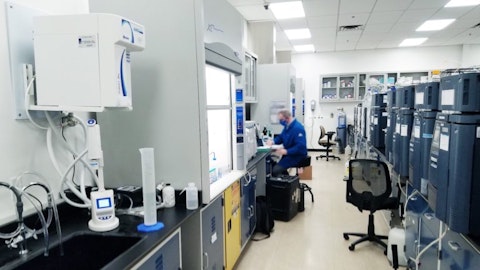
Photo by RephiLe water on Unsplash
Jeff Taylor: Thanks, Gregg, and good morning, everyone. Overall, it was a solid quarter for Franklin Electric. We established new fourth quarter records for consolidated sales and operating income. Our fully diluted earnings per share were $0.84 for the fourth quarter 2022 versus $0.85 for the fourth quarter 2021. Worth noting, the company’s fourth quarter 2021 results included a $6.5 million or approximately $0.12 earnings per share bargain purchase gain, which I called out last year as a onetime event and nonoperational in nature. On a pro forma basis, if you exclude the bargain purchase gain impact from EPS, our current quarter EPS would be up 15% over the prior year quarter. Fourth quarter 2022 consolidated sales were a record $489.4 million, a year-over-year increase of 13%.
Organic growth was 13% in the quarter while acquisition related sales added 5%, offset by a 5% decline due to foreign currency translation. Water Systems sales in the US and Canada were up about 15% compared to the fourth quarter 2021 due to price, volume and acquisition related sales. In the fourth quarter 2022, sales from businesses acquired since the fourth quarter of 2021 were $3.9 million. Water Systems sales in the US and Canada grew 13% organically in the fourth quarter. Sales of groundwater pumping equipment increased by about 1% and sales of all surface pumping equipment increased by about 28%, all due to strong end market demand. Water Systems sales decreased by $18.2 million or about 7% in the fourth quarter of 2022 due to foreign currency translation.
Outside the US and Canada, Water Systems sales increased by about 1% overall and higher sales in Europe, the Middle East and Africa drove organic sales growth of about 16%. Additionally, the company had higher sales in the Latin America and Asia Pacific markets. Water Systems operating income was $44.6 million for the fourth quarter of 2022, up $8.2 million or about 23% versus fourth quarter of 2021. Operating income margin was 15.9%, a year-over-year increase of 180 basis points. The increase in operating income was primarily due to higher sales. Operating income margin improved due to fixed cost leverage from higher sales, price realization and cost management. Overcoming weather related headwinds at the end of the quarter, Distribution’s fourth quarter sales were a record $148.9 million versus fourth quarter 2021 sales of $116.9 million.
In the fourth quarter of 2022, organic sales increased 12% compared to the fourth quarter 2021, and sales from businesses acquired since the fourth quarter of 2021 were $17.5 million. The Distribution segment’s operating income was $2.9 million for the fourth quarter, a year-over-year decrease of $2.7 million. Operating income margin was 1.9% of sales of Distribution in the fourth quarter of 2022 versus 4.8% in the prior year. Distribution segment income was negatively impacted by weather as colder weather and rain were more prevalent in 2022 compared to 2021. Income was also negatively impacted by margin compression from lower pricing on commodity based products sold through the business and higher operating expenses as the business invested in future growth with six new branch locations.
Fueling Systems sales were a fourth quarter record of $85.5 million in 2022 and increased 8% versus the fourth quarter 2021. Sales decreased by $1.5 million or about 2% in the fourth quarter of 2022 due to foreign currency translation. Fueling Systems sales in the US and Canada increased by about 14% compared to the fourth quarter 2021. The increase resulted from strong broad based demand across most product lines. Outside the US and Canada, Fueling Systems revenues were flat with sales growth in India offsetting lower sales in China. Fueling Systems operating income was $24.3 million, a fourth quarter record driven by higher sales compared to $22.2 million in the fourth quarter 2021. The fourth quarter 2022 operating income margin was 28.4% compared to 28.1% of net sales in the prior year.
Franklin Electric’s consolidated gross profit was $166.2 million for the fourth quarter 2022, a 14% year-over-year increase. Gross profit as a percentage of net sales was 34% in the fourth quarter 2022 versus 33.6% in the prior year. The gross profit increase on a dollar basis was primarily driven by higher sales. In the fourth quarter 2022 gross profit margin was up 40 basis points, while realized price in actions more than offset inflationary cost increases. Supply disruptions caused unfavorable absorption variances and higher inbound freight costs, though to a lesser degree than previous quarters in 2020. Selling, general and administrative expenses were $109.7 million in the fourth quarter 2022 compared to $97.7 million in the fourth quarter 2021.
SG&A expenses from acquired businesses were about $5.1 million. Excluding acquisitions, SG&A expenses were higher by $6.9 million. As a percentage of sales, total SG&A costs were 20 basis points lower than the prior year quarter. Consolidated operating income was $56.2 million in the fourth quarter 2022, up $9 million or 19% from $47.2 million in the fourth quarter 2021, despite an unfavorable foreign exchange translation headwind of approximately $3.2 million. The increase in operating income was primarily due to higher sales. The fourth quarter 2022 operating income margin was 11.5% versus 10.9% of net sales in the fourth quarter 2021. The increase in operating margin was primarily due to leverage on higher sales volumes and cost controls and SG&A spending.
Other non-operating expenses were higher in the fourth quarter compared to prior year. First, interest expense was higher due to higher average debt outstanding and higher interest rates. Foreign exchange losses were higher primarily due to our operations in Turkey and Argentina. The effective tax rate was 18% for the quarter compared to 21% in the prior year quarter. The company purchased about 135,000 shares of its common stock in the open market for about $10.8 million during the fourth quarter 2022. At the end of 2022, the remaining share repurchase authorization is approximately 288,000 shares. On January 23rd, the company announced a quarterly cash dividend of $0.225 per share, representing a 15% increase from the prior quarterly dividend.
And with that, I’ll now turn the call back to Greg to highlight some of our latest global secular trends.
Gregg Sengstack: Thank you, Jeff. In addition to our track record of successful execution, our growth prospects are also supported by tailwinds that will propel the business forward over the long term. For example, the growth in remote work, particularly in the US and the need for more affordable housing will likely lead to increased demand for homes that maybe beyond the reach of existing municipal water systems, amplifying the need for and use of groundwater pumping systems. And whether one is on a municipal water or a private water system, greater awareness of water quality is driving demand from water treatment. Changing weather conditions across geographies like extended periods of drought require more frequent replacement of current groundwater systems and the need to drill deeper than before.
For these deeper sets, contractors are even more focused on high quality pumping systems as the cost of polling and replacing a failed pumping system is considerable. Flood events like what occurred in the West Coast last month and the coastal flooding from hurricanes increases demand for our line of large dewatering and surface pumps. Elevated metal prices and demand for rare earth metals should also drive additional demand for industrial pumping systems. We are intentionally expanding our industrial pump offerings and our global manufacturing, assembly and distribution facilities to provide the foundation to supply this increasing demand. Often, these applications require higher cost materials of construction for the pumping system, increasing our revenue and margin.
And as the cost of electricity to operate the pumps is often many times the cost of the equipment, operators are looking for high efficiency systems to lower their total cost of ownership. Further, with continued uncertainty around grain exports, we believe it’s reasonable to expect that increased focus on food security will lead to accelerating growth in irrigation in other regions of the world, leading to additional demand for groundwater pumping systems. Turning to our Fuel business. While we recognize the world fleet of liquid fueled vehicles is forecasted to peak around 2030, liquid fueled vehicles will be around for decades. In the US, major fueling marketers are consolidating the market, upgrading existing sites and investing in new locations.
These operators understand the need and are willing to invest in new forecourt equipment that is safer, cleaner and provides the lowest total cost of ownership. Internationally, with global growth, particularly in developing regions of the world, we expect continued interest in our comprehensive line of fuel delivery and management systems as well as installing Vapor Recovery and management equipment to improve air quality. For example, in India, we’re seeing significant multiyear investments in gas station infrastructure and vapor containment and control across the country. Anticipating increased focus on electrification and electrical infrastructure resiliency, our team in Madison has been investing in development and sale of devices that monitor transformers and high voltage circuit breakers as well as devices for the testing and monitoring of backup batteries for telecommunication and rail.
And most recently, in response to the multibillion dollar national electric vehicle infrastructure program, our team has developed the charger agnostic NexPhase switchgear. This switchgear can also be used by automobile dealers to satisfy manufacturer requirements for on-site Level 3 charging. In short, all three of our segments are well positioned to benefit from significant global trends, and our track record gives us confidence in our ability to successfully execute well into the future. We’re entering 2023 with a strong foundation and are focused on driving value for our shareholders. We attributed our record results for 2022 to the continued execution by the Franklin team globally. I want to thank each of my colleagues for another year of operational, strategic and financial success.
This concludes our prepared remarks. We will turn the call over to Andrew for questions.
See also 12 Best Low Priced Dividend Stocks To Buy and 11 Most Undervalued Foreign Stocks To Buy.
Q&A Session
Follow Franklin Electric Co Inc (NASDAQ:FELE)
Follow Franklin Electric Co Inc (NASDAQ:FELE)
Operator: Our first question comes from the line of Mike Halloran with R.W. Baird.
Mike Halloran: So Greg, you talked a little bit about expectations from economists back half weakness. Maybe talk about what’s embedded in your guidance as you work through the year. Is there a slowdown expected in the back half from a conservative perspective, how does that layer in or how does that look by the various product categories or segments that you have? And any kind of direction to help what you’re embedding in guidance as far as that goes?
Gregg Sengstack: I’m not sure my crystal ball is any better than yours. But see, I suspect yours is probably better because you talk to more companies. As we see it, Mike, we’ve got a strong backlog coming in the year, which we’ve talked about now for the last couple of years as being unusual for us because we tend to sell out of stock. We anticipate that will be a kind of fill — we’ll be taking that down kind of out throughout the year. And so that’s what we’re mindful that maybe the back half of the year might be not as strong as the first half because of what people are saying. That said, as you know, the seasonality of our business is we’re very strong in Q2 and 3. If there was destocking or maybe going back to normal order patterns in the US in particular in the back half of 2022, we’ll be lapping those.
And so that will be a reasonable comparison. Fundamentally, in the Fuel business, again, we see it being steady. It is a little bit seasonal because of the construction nature of the business. But we really see that kind of following on, normal patterns, quote unquote. And then Distribution, again, we would expect the strong seasonalities in Q2 and Q3. So we’re just being mindful that the world out there is saying that there maybe a slowdown and economists are saying that. So we just thought it’s important to say that we thought through that, and this is how we developed our guidance for the year.
Mike Halloran: On the pricing side of things, as you look at how things are tracking. How much price is embedded in that thought process or at least loosely, and are you seeing that pricing hold as you look across your product segments?
Jeff Taylor: I would say that our pricing is going to vary a little bit by product and by region, Mike. But in general, I think, consistent with our overall guidance, it’s going to be in that kind of low to mid single digit range where you’re going to see it kind of in the mid single digit range is where we’re also seeing currency impacts, and we’re attempting to recover the impact of foreign currency. And so in general, it’s going to be more of a return to normal in 2023 versus 2022, which was really characterized by high inflation, high pricing to recover inflation, significant supply chain challenges. I think in general, we see 2023 returning to be more normal, not necessarily saying that looks like kind of pre-COVID years, but certainly less inflation repricing and continued improvement in supply chain as we move through 2023 overall. So I answered a little more than just pricing there
Mike Halloran: Yes, but that helps. And last one on inventory for me. It doesn’t sound like there’s excess channel inventory, whether it’s at Headwater or your own content in the marketplace. Is that true and any thoughts on that side where we stand on inventory from a higher level relative to what you hope the right run rate would be?
Jeff Taylor: I think inventory stayed at relatively healthy levels. I wouldn’t say it’s exaggerated. I mean, you’re going to have places where you have some higher inventory in some places where you have lower inventory. But overall, I think it’s in pretty good shape in the supply chain, and that will pull through demand. I think Gregg mentioned this earlier that there was some heavy prebuying in the fourth quarter of ’21 due to really longer lead times for supply chains and challenges to procure materials. And so we’re seeing a return to more normal buying pattern. And so we expect to see that ramp up really in more in the first quarter and second quarter of this year as we enter the groundwater season.
Operator: Our next question comes from the line of Matt Summerville with D.A. Davidson.
Matt Summerville: A couple of questions, maybe first with Distribution. As we sit here today, given the seasonality in the business, given the piece that’s being impacted by the rollback in commodity pass throughs. What would be a realistic kind of margin bandwidth you would suggest that we think about for ’23 for that business relative to the 8% plus margin, I believe you had for ’22? And then I have a follow up or two.
Jeff Taylor: Certainly, our goal is always to improve our margins on a go forward basis. Headwater distribution business has really done a nice job over the last five years of building and growing their gross margin as well as operating margins, and they had a really nice performance this year. Having said that, they also had the benefit of a strong inflationary environment, which was giving them a margin boost in 2022. And so we think that returns more to normal, so they won’t have that margin boost in 2023. I would say that our range is still in that 5% to 7% range, but we certainly expect them to perform near the higher end of that range.
Matt Summerville: How much of the distribution revenue — so you did $670 million, we’ll call it last year. How much of that $670 million is impacted by commodity driven adjustments, and how often are those commodity driven adjustments made, if you will?
Jeff Taylor: So in terms of the overall business, I would say that depending on the mix, it’s 40% to 50% commodity based products, and the remainder is non-commodity based products. And the commodity adjustment really is it’s the flow through of the inventory from the time they purchase it to the time they sell it. And so they’re able to price more dynamically. So when costs go up, they’re able to price that immediately into their products that they sell, and that’s what gives them a little margin boost in the current — in that environment. And then when commodity prices start to turn over and decline, they have the opposite effect, and so they felt that in the fourth quarter. We would expect that there will be some of that carry over into the first quarter, and then it’s going to stabilize as we go through 2023.
Matt Summerville: And then maybe just a follow-up question. On the groundwater business, I thought you said in your prepared remarks, Jeff, that the groundwater was up — this is US and Canada, groundwater was up 1% in Q4. If I have that number right, and I could have jotted it down wrong, that would imply that volume was down. Can you guys touch on that, provide a little more color, please?
Jeff Taylor: Let me take a quick look. I think that volume would have been flat, but possibly slightly down in the fourth quarter in the groundwater business.
Matt Summerville: I guess what I’m trying to understand is, based on your kind of remarks and overall bullishness on the business, I guess I’m a little bit surprised that groundwater was down, but maybe that was a prebuy phenomenon in the prior year. Can you just kind of flush all that out?
Jeff Taylor: I think that you hit the nail on the head there. Some of it was prebuying earlier in the year, or in Q4 of 2021 versus Q4 of in 2022. And so that was certainly a driver in groundwater. And I would say that while they’re improving, we still do have some supply challenges that are impacting us in various locations as well.
Gregg Sengstack: Matt, I would add that, again, a meaningful portion of that business — of those sales are from the manufacturing segment of the Distribution segment. And so as Headwater was looking at their forecasted needs that they were able to turn down a little bit quicker on replenishment, but their out the door sales were still very strong. So that’s where we get the information of why we think the market is strong as we have that level of transparency and distribution level, but yet the intercompany sales or inter segment sales can be more volatile because of the large component of that business going through Headwater.
Operator: And our next question comes from the line of Walter Liptak with Seaport Global.
